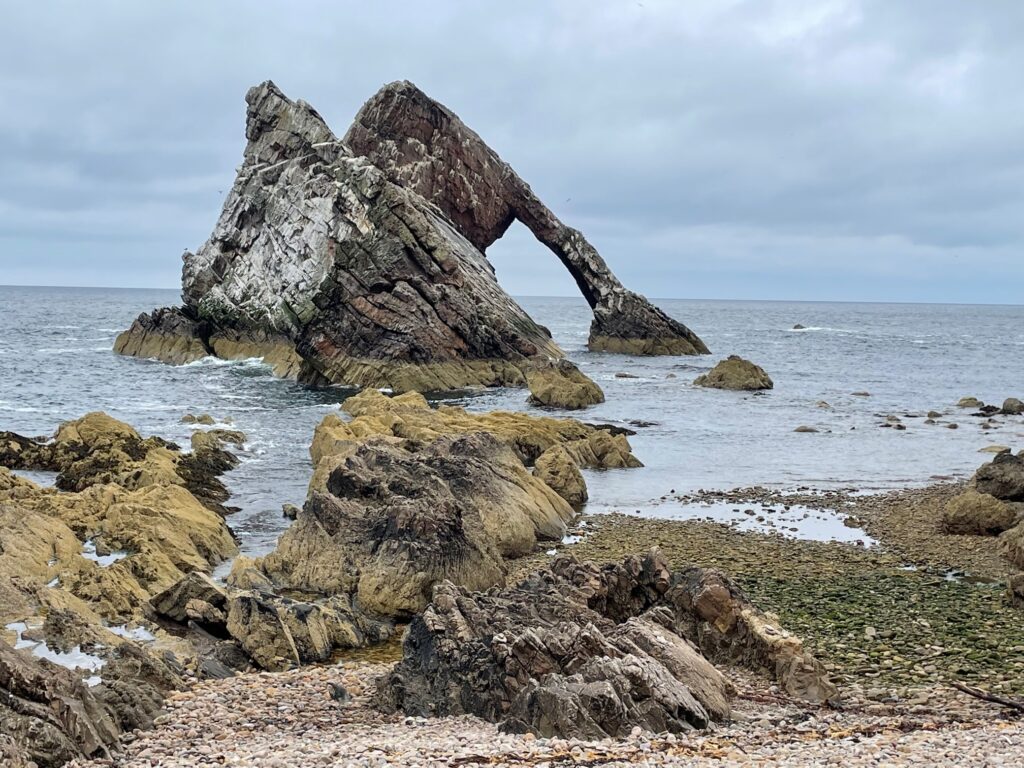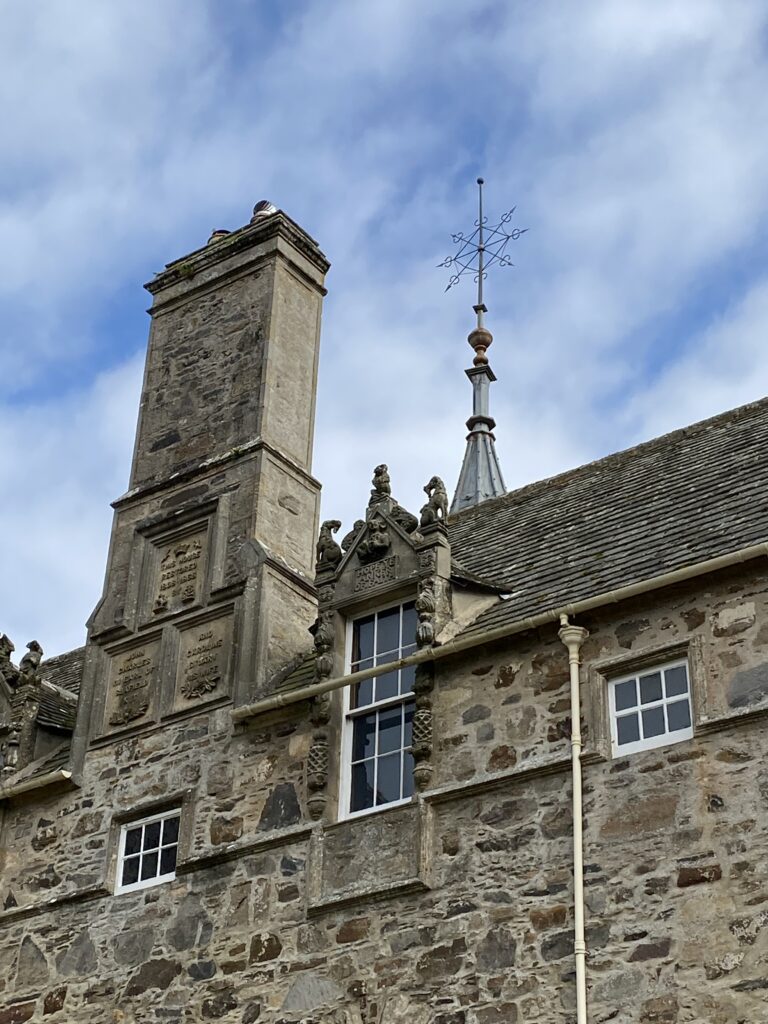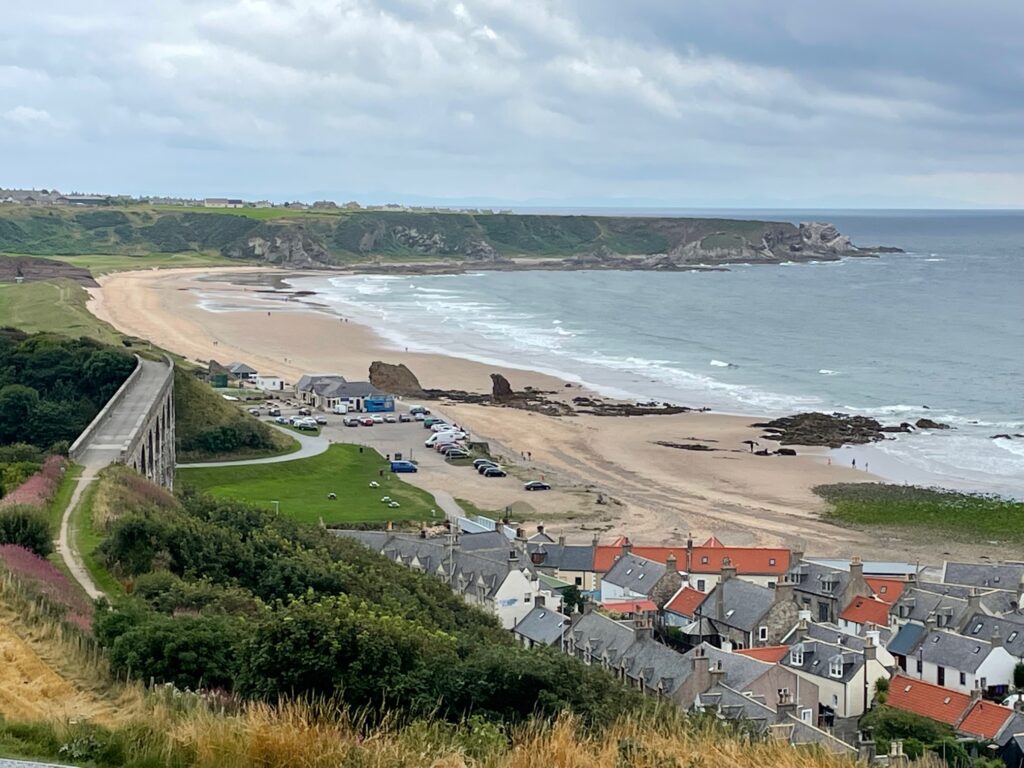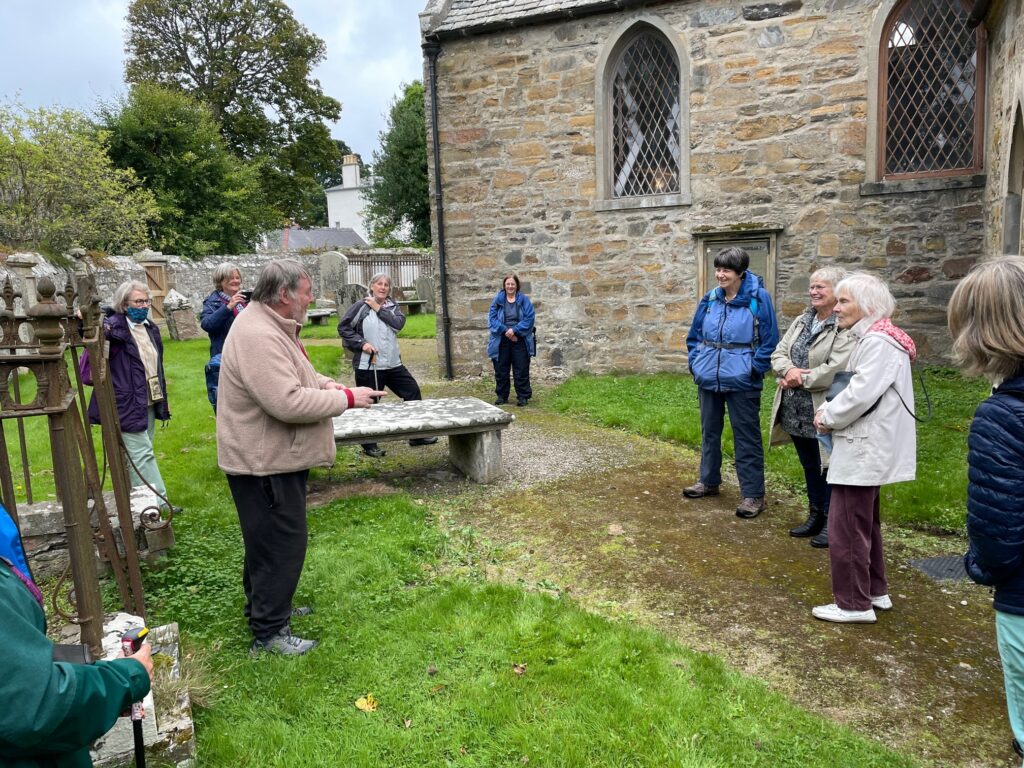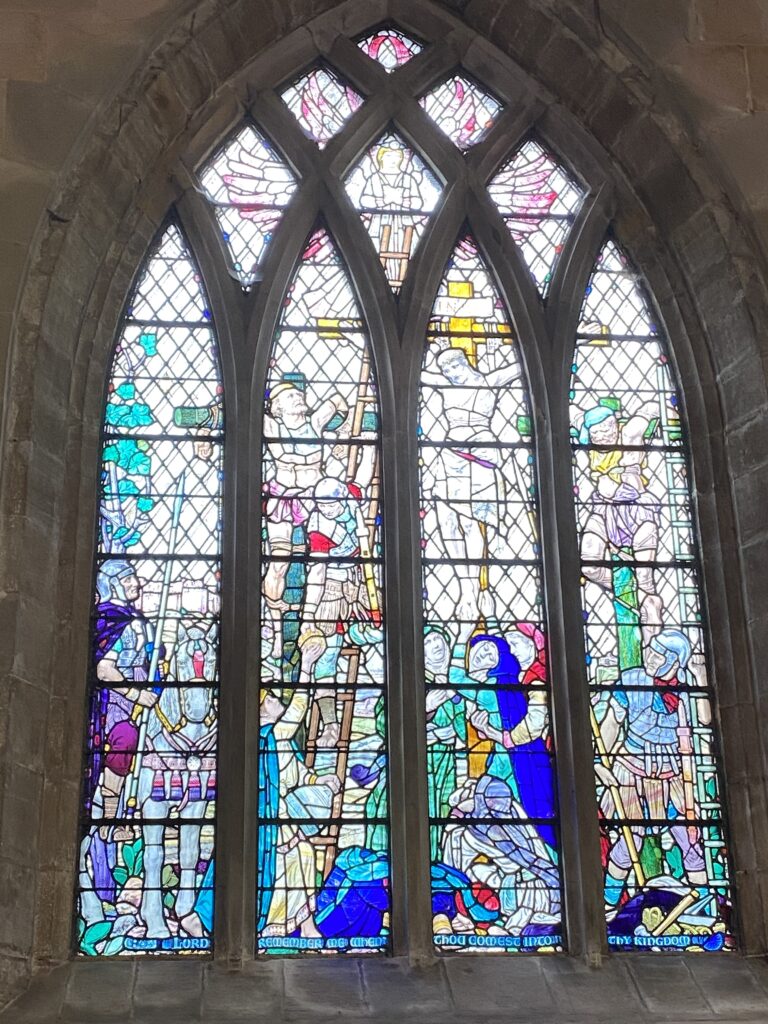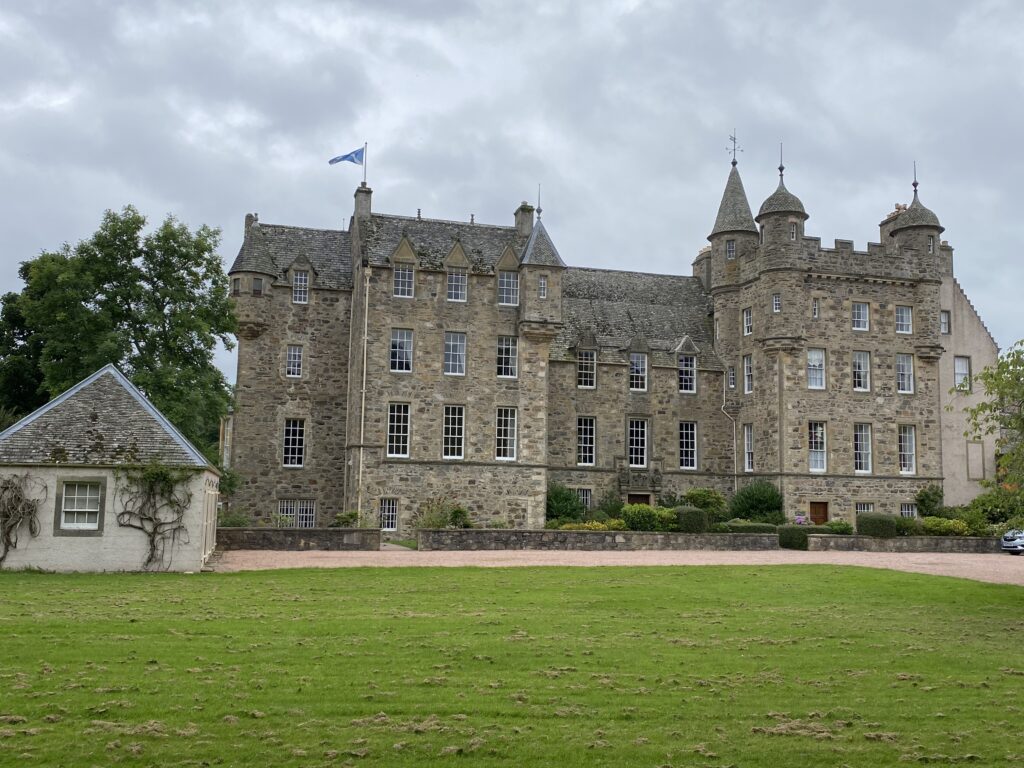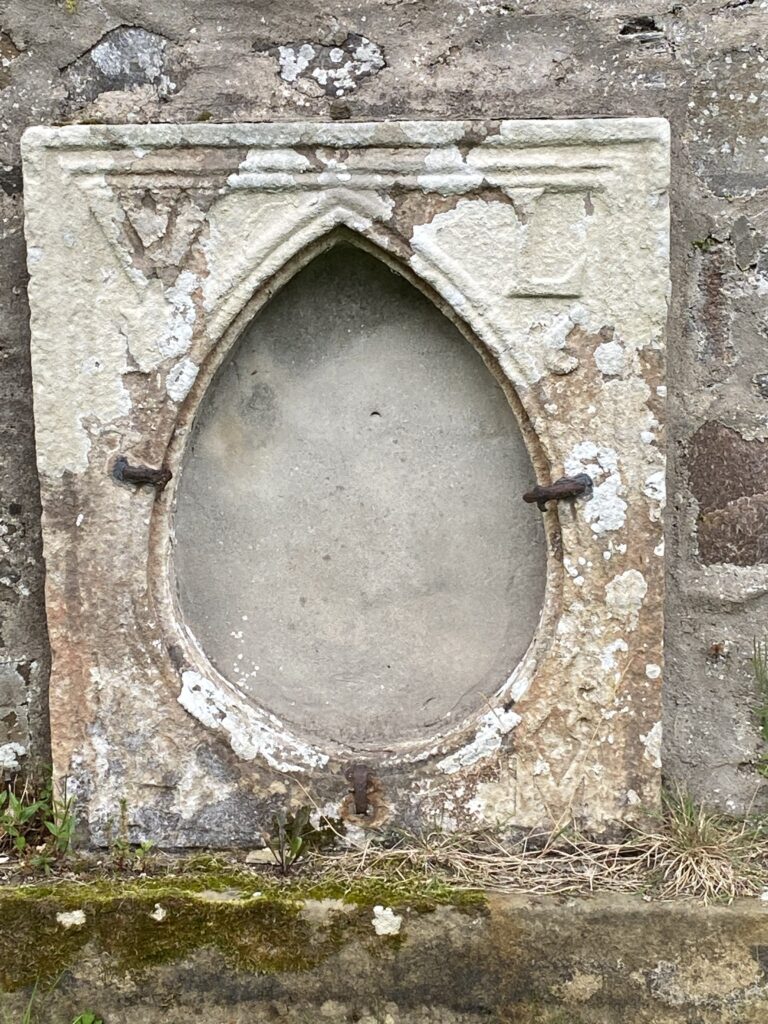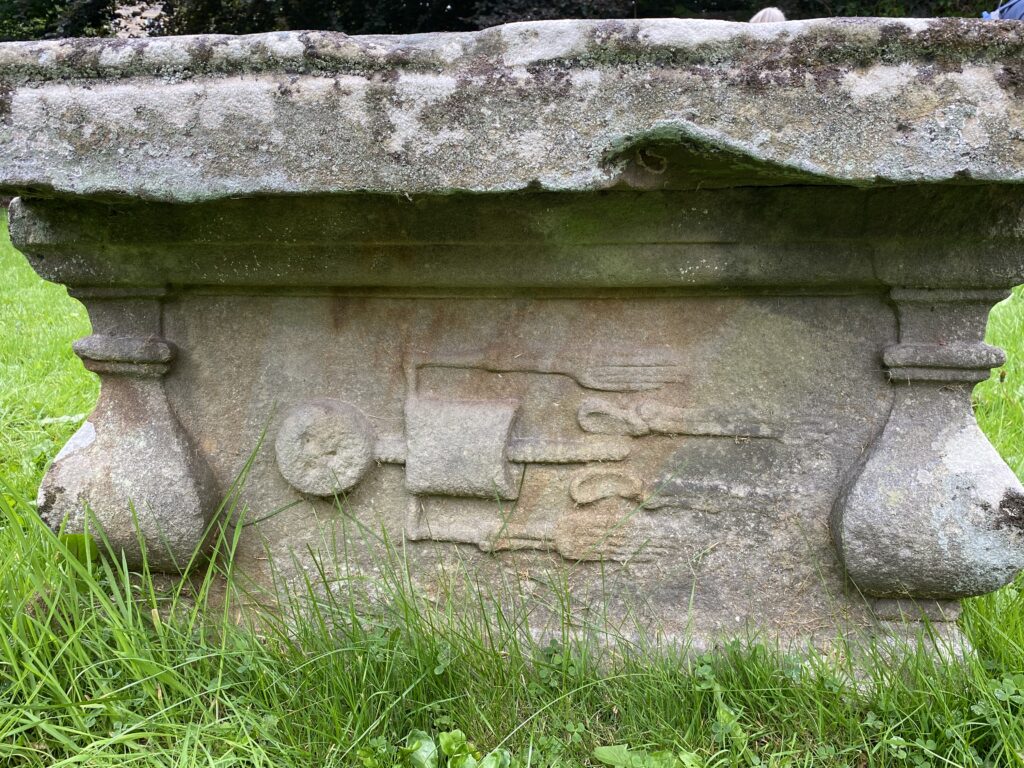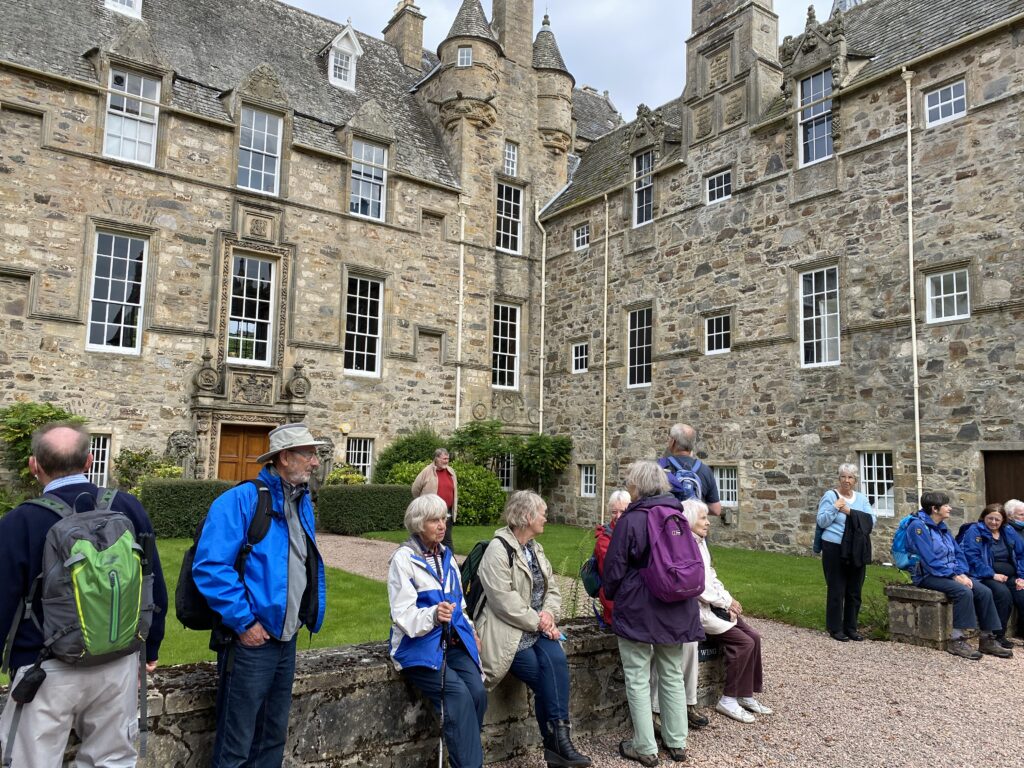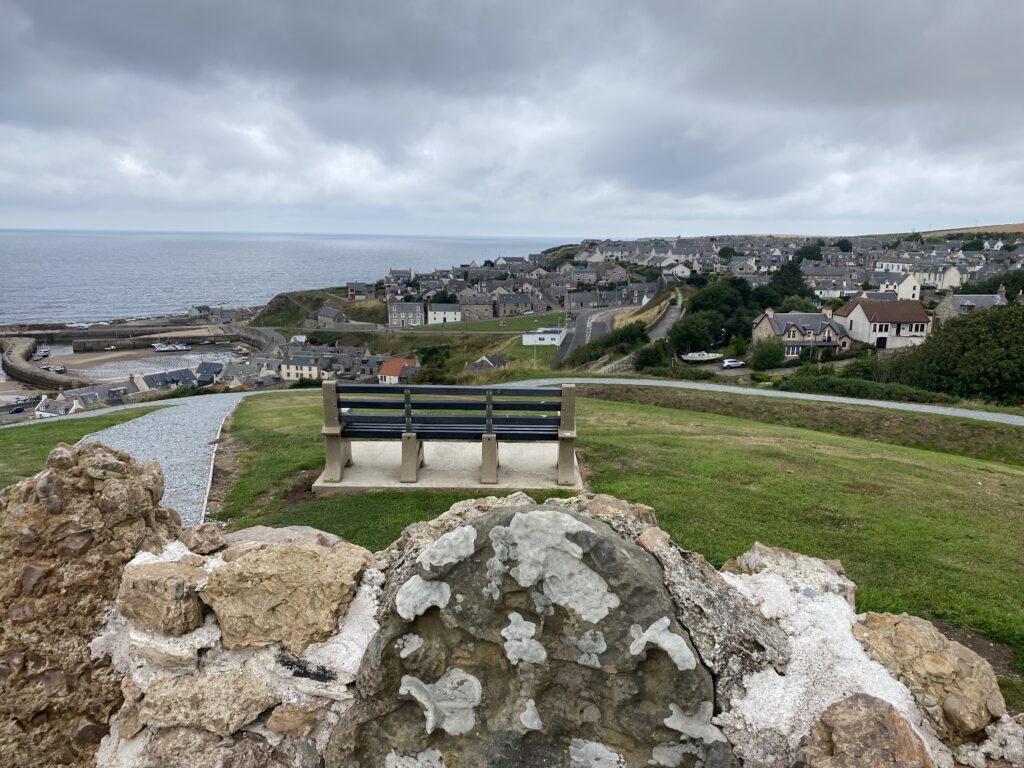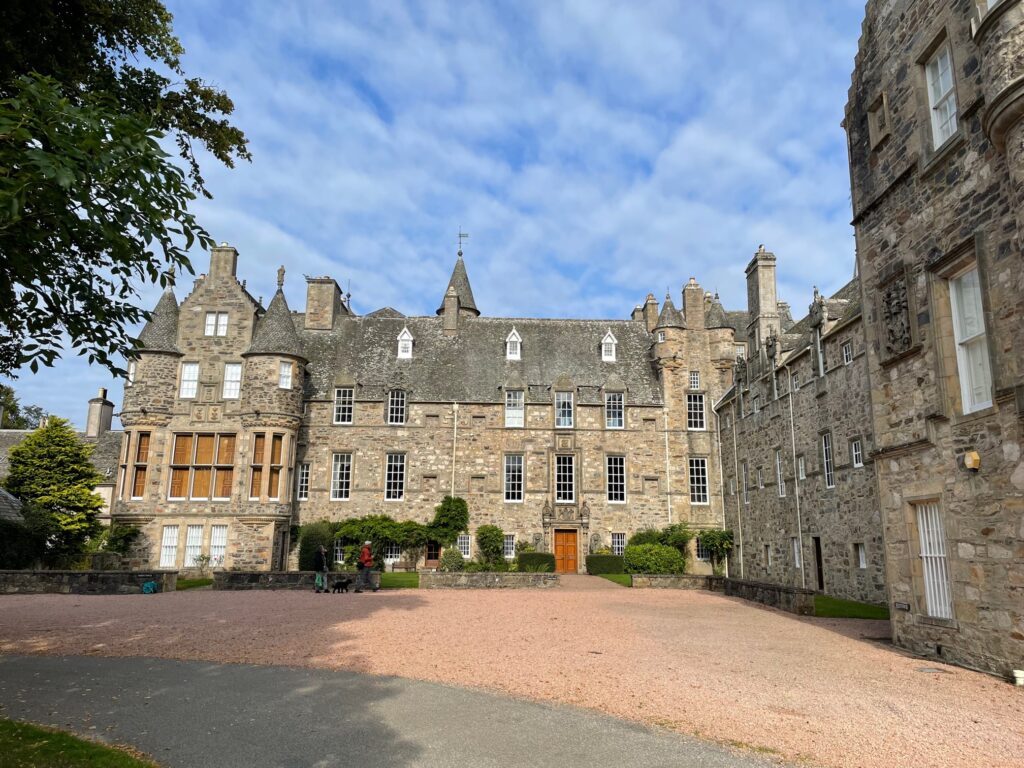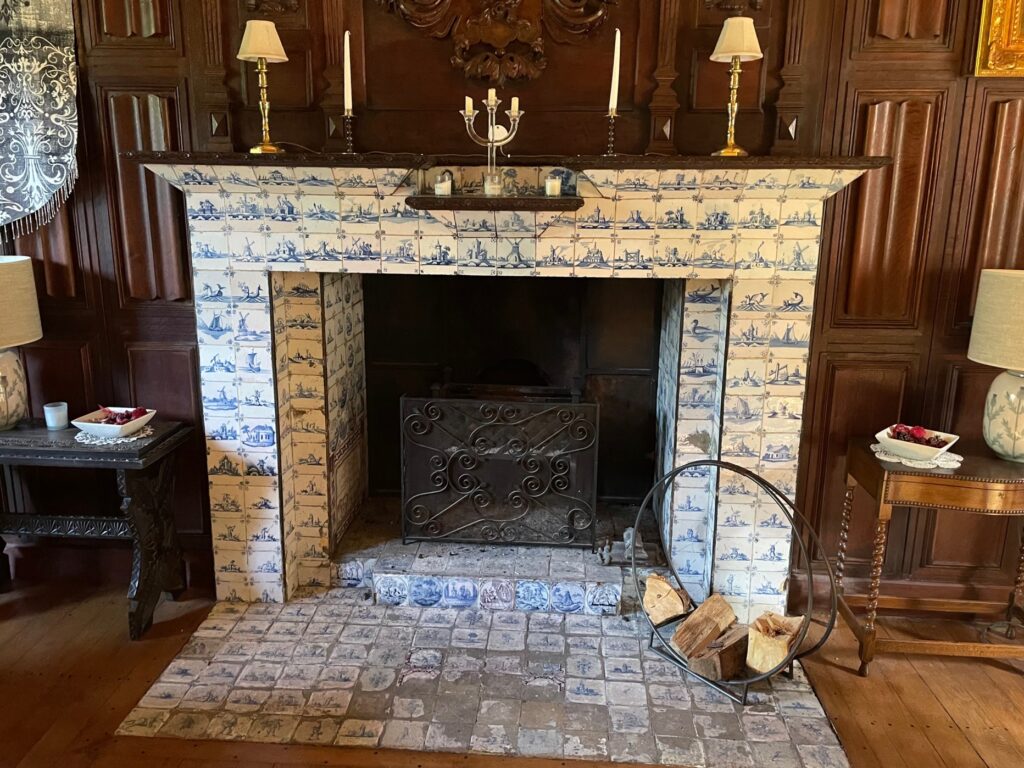Twenty two members travelled to Portknockie on a large comfortable Kineil bus, in the safe hands of Richard, our driver. We arrived in Portknockie at about 11.15am and walked down the hill from the bus stop for a view of the Bow Fiddle Rock, the most spectacular of the Cullen quartzite formations on this stretch of the coast. There were not many nesting birds there now, at the end of August but it was still an impressive sight. Following Mary Shand’s lead we walked along the cliff path with fine views of the Rock and Cullen Bay, before joining the path of the old North of Scotland railway line (opened in 1886 and closed by Dr Beeching in 1968.) The path incorporates the Cullen viaduct – 80 feet high and 613 feet long with 8 arches, each spanning 62 feet. There were originally six further arches over North Castle Street, but the two most easterly collapsed a year after the line opened, when the embankment slipped. These arches were replaced by a new emabankment and one was filled in with concrete. (The line was only closed for fifteen days. There are a further four small arches over Seafield Street.
At the Cullen end of the viaduct some of us stopped for a picnic on benches with a view of the harbour and the Seatown, while others climbed Castle Hill, which has been transformed from a wilderness of whins and weeds by a team of community volunteers and now affords wonderful views of the coastline with plenty of benches for picnics.
We reassembled at Cullen Auld Kirk within the grounds of Cullen House at 2.30pm. The church is all that remains of the village of Old Cullen, which was demolished by the Earl of Seafield and relocated to the east of the Seatown in the 1820s. We were given a comprehensive tour of the church inside and outside by Field Club member John Aitken. The graveyard has a large number of very old and interesting table tombs, which were convenient to sit on while John explained the history and architecture of the church which dates from 1236 with sixteenth and eighteenth century additions and alterations. Inside we were shown the remarkable Laird’s Loft carved in wood at the beginning of the 17th century and the ornate Ogilvie tomb from the sixteenth century.( The Ogilvies were Earls of Findlater and later acquired the title of Seafield). We were entertained by Judy Phillips, an accomplished clarsach player.
From the church we walked through to Cullen House where we were welcomed by one of the residents of the house (now divided into 7 apartments), Colin Shearer, who comes from Buckie, has done substantial research on the history and architecture of this huge and extraordinary building, and shared his knowledge and enthusiasm with us Dating from 1600, though probably incorporating an earlier manor house, the building has been enlarged over the centuries by several architects including James Adam in the eighteenth century and David Bryce, noted for the Scottish Baronial style in the nineteenth. The house was converted vertically in the 1980s into 7 apartments by architect Kit Martin and local architect Douglas Forrest. Colin very kindly took us into the entrance hall of his own apartment (actually two apartments joined together) to admire the magnificent Delft tile fireplace, and then upstairs to the first floor hall. Unfortunately we ran out of time as the Cullen Bay Hotel was calling us for high tea (literally). Many thanks to John and Colin for giving us such an interesting and entertaining afternoon. We were all ready for our fish and chips at 5pm!

